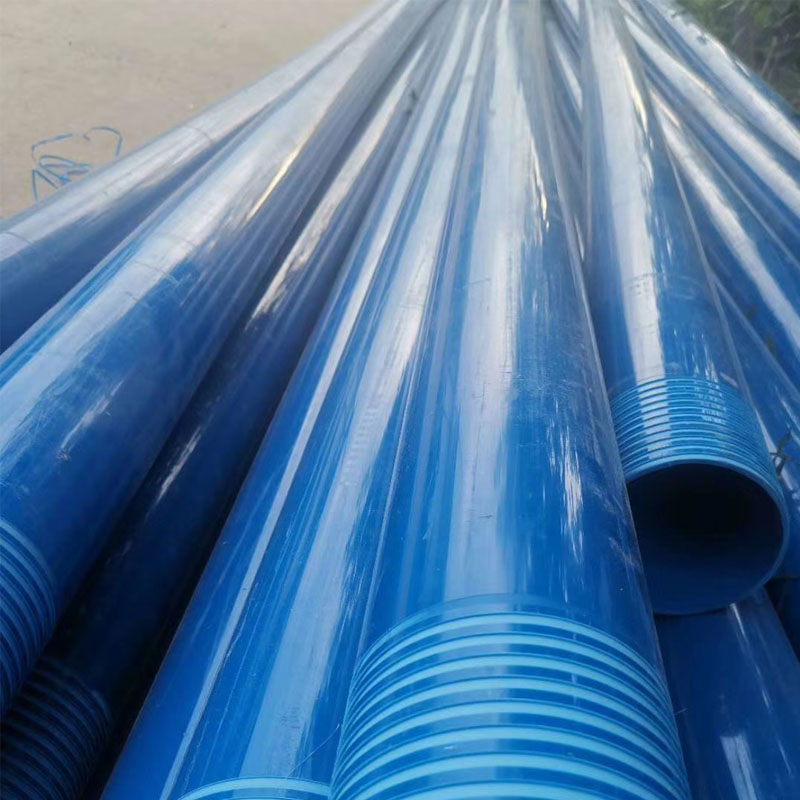Dec . 21, 2024 15:48 Back to list
Connecting PVC and HDPE Pipes in China for Efficient Waterflow Solutions
Understanding the Connection between PVC and HDPE Pipes in China
In recent years, the construction and plumbing industries in China have seen a significant rise in the use of various piping materials, among which PVC (Polyvinyl Chloride) and HDPE (High-Density Polyethylene) have gained substantial traction. Both materials are known for their durability, resistance to corrosion, and overall efficiency in water and wastewater management systems. However, as projects increasingly require the integration of different pipe types, understanding how to effectively connect PVC to HDPE pipes has become vital for contractors and engineers.
Characteristics of PVC and HDPE Pipes
PVC pipes are widely used due to their excellent chemical resistance, lightweight nature, and low cost. They are commonly utilized in drainage systems, irrigation, and water supply lines. Additionally, PVC is relatively easy to install, which has contributed to its popularity in both residential and industrial applications.
On the other hand, HDPE pipes are known for their high strength-to-density ratio, flexibility, and resistance to impact and wear. They are favored for applications involving harsh environmental conditions, such as underground installations and applications that require a high degree of flexibility. The toughness of HDPE also makes it an ideal choice for transferring potable water and chemicals.
Despite their advantages, the challenge arises when projects necessitate the connection of PVC and HDPE pipes. The differences in material properties, such as thermal expansion coefficients, stiffness, and joining methods, can complicate the connection process.
Connection Methods
There are several methods for connecting PVC and HDPE pipes, each with its own sets of advantages and disadvantages. The most common methods include the following
1. Mechanical Couplings This method involves the use of coupling devices specifically designed to connect pipes of different materials. These couplings can accommodate the differing diameters and are generally easy to install. Mechanical couplings can be a reliable option as they allow some movement between the two pipes, reducing stress on the connection.
china pvc to hdpe pipe connection

2. Transition Fittings These fittings are designed to connect pipes of dissimilar materials. They typically feature one end compatible with PVC and the other end with HDPE. Transition fittings can include heat-shrink sleeves or threaded connections that provide a secure joining point and ensure that the integrity of both pipe systems is maintained.
3. Adhesive and Sealants While it is not advisable to use solvent cement for connecting PVC and HDPE due to their different chemical properties, specialized adhesives and sealants can sometimes be used effectively. It is crucial to select products designed for bonding plastics and ensure that they are compatible with both materials to avoid joint failure.
Best Practices for Connection
Ensuring a successful connection between PVC and HDPE pipes requires adherence to best practices. Before beginning the connection process, it is important to assess the environment in which the pipes will be installed. Considerations such as soil conditions, temperature, and potential movement can all influence the choice of connection method.
Proper alignment of the pipes is essential to prevent stress on the connection joint. Adequate support should be provided to maintain alignment and minimize the risk of bending or shifting, which could lead to leaks.
Finally, regular inspection and maintenance of the connection points are key to long-term performance. By staying proactive in monitoring and addressing any potential issues, operators can significantly extend the lifespan of the connected piping system.
Conclusion
As the demand for efficient plumbing and drainage solutions continues to grow in China, the ability to effectively connect different types of pipes, specifically PVC and HDPE, remains of critical importance. Understanding the characteristics, advantages, and proper connection methods for these materials ensures that engineers and contractors can design systems that are both functional and durable. Through careful planning, the right materials, and adherence to best practices, successful integrations of PVC and HDPE piping will continue to support the development of infrastructure across China.
-
High-Quality PVC Borehole Pipes Durable & Versatile Pipe Solutions
NewsJul.08,2025
-
High-Quality PVC Perforated Pipes for Efficient Drainage Leading Manufacturers & Factories
NewsJul.08,2025
-
High-Quality PVC Borehole Pipes Durable Pipe Solutions by Leading Manufacturer
NewsJul.08,2025
-
High-Quality PVC Borehole Pipes Reliable PVC Pipe Manufacturer Solutions
NewsJul.07,2025
-
High-Quality UPVC Drain Pipes Durable HDPE & Drain Pipe Solutions
NewsJul.07,2025
-
High-Quality Conduit Pipes & HDPE Conduit Fittings Manufacturer Reliable Factory Supply
NewsJul.06,2025

